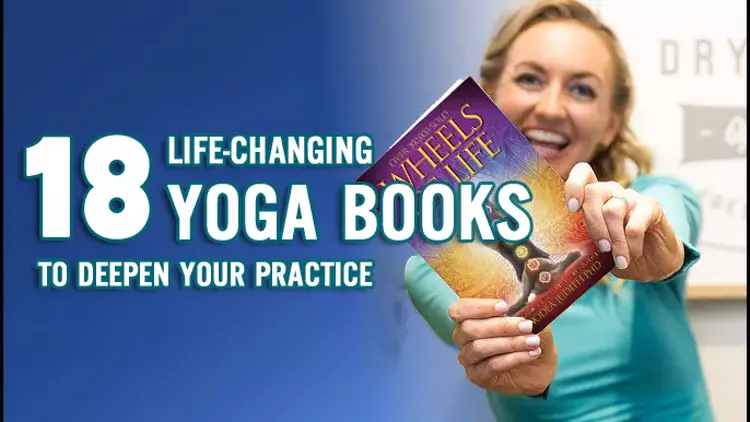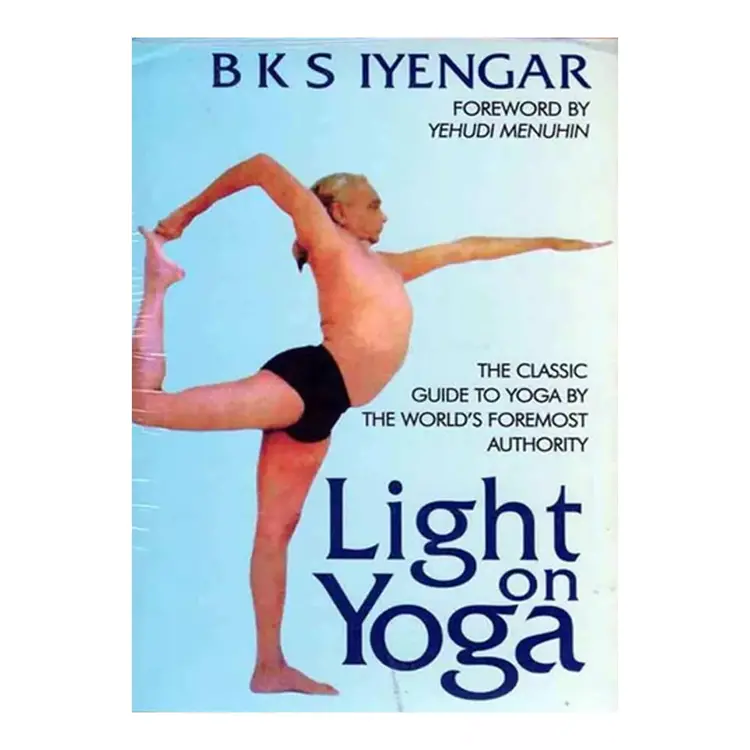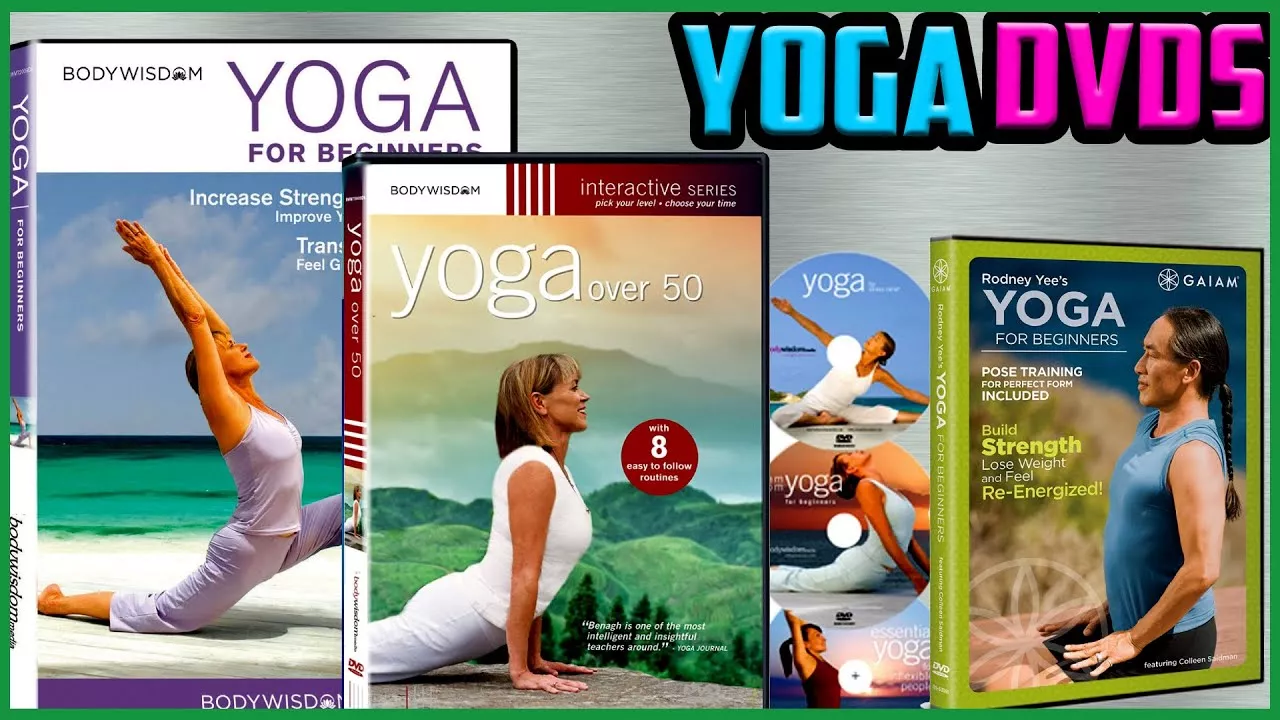Yoga is more than just physical poses—it’s a journey into self-awareness, spiritual growth, and holistic well-being.
Whether you’re new to yoga or a seasoned practitioner, these 18 books provide profound insights into yoga’s philosophy, anatomy, and transformative power.

Let’s explore each one in detail and see how they can elevate your practice.
1. Light on Yoga by B.K.S. Iyengar
Known as the “Bible of Modern Yoga,” this book by yoga legend B.K.S. Iyengar is a comprehensive guide for practitioners of all levels.

2. Ashtanga Yoga: Practice and Philosophy by Gregor Maehle
This book dives deep into the Ashtanga Yoga system, combining practical instructions with spiritual wisdom.

What It Covers:
- Detailed descriptions of the Ashtanga Primary Series.
- Commentary on Patanjali’s Yoga Sutras.
- Guidance on breath, bandhas, and drishti.
Why It’s Life-Changing:
- Perfect for Ashtanga practitioners seeking a deeper understanding of the tradition.
- Bridges the gap between physical practice and spiritual growth
3. Props for Yoga (3 Volumes) by Eyal Shifroni
A practical guide to using yoga props to enhance your practice.

What It Covers:
- Techniques for adapting poses using blocks, straps, and bolsters.
- Sequences for improving flexibility and alignment.
- Modifications for practitioners with physical limitations.
Why It’s Life-Changing:
- Makes yoga accessible for all body types and skill levels.
- Encourages a safe and sustainable practice.
4. Your Body, Your Yoga by Bernie Clark
This book focuses on how individual anatomy influences your yoga practice.

What It Covers:
- The science of human anatomy applied to yoga.
- Variations in bone structure and muscle engagement.
- How to adapt poses for your unique body.
Why It’s Life-Changing:
- Helps practitioners understand why certain poses feel different for everyone.
- Empowers you to customize your practice for maximum benefit.
5. Light on Pranayama by B.K.S. Iyengar
A definitive guide to the art and science of breathing.

6. Prana and Pranayama by Swami Niranjanananda Saraswati
A deep dive into the concept of prana (life force) and its regulation through Pranayama.

7. Eastern Body, Western Mind by Anodea Judith
This book combines the chakra system with Western psychology.

What It Covers:
- An overview of the seven chakras and their functions.
- Emotional and psychological implications of each chakra.
- Practices to balance and heal your energy centers.
Why It’s Life-Changing:
- Bridges Eastern spirituality with Western therapeutic practices.
- Provides a roadmap for personal growth and self-discovery.
8. Wheels of Life by Anodea Judith
A comprehensive guide to the chakra system.

9. Tantra Illuminated by Christopher Wallis
An accessible introduction to the philosophy and practices of Tantra.

10. A Life Worth Breathing by Max Strom
This book combines yoga philosophy with practical advice for living a more meaningful life.

11. Teaching Yoga by Mark Stephens
A go-to resource for aspiring yoga teachers.

12. Inside The Yoga Sutras by Jaganath Carrera
A modern commentary on Patanjali’s Yoga Sutras.

13. The Science of Yoga by I.K. Taimni
An analytical exploration of yoga’s spiritual and scientific dimensions.

14. How Yoga Works by Michael Roach and Christie McNally
A fictional story that explains yoga philosophy through engaging storytelling.

15. Functional Anatomy of Yoga by David Keil
A must-read for understanding yoga anatomy.

16. The Key Muscles of Yoga by Ray Long
An illustrated guide to the muscles engaged in yoga.

17. The Key Poses of Yoga by Ray Long
A companion to The Key Muscles of Yoga, focusing on poses.

18. Yoga Mat Companion Series by Ray Long
A four-volume series covering different aspects of yoga practice.

These 18 books offer valuable knowledge and inspiration for anyone seeking to deepen their yoga practice.
Whether you’re focused on poses, philosophy, or energy work, these resources can guide you toward greater understanding and transformation.
Pick a book that resonates with your current journey and enjoy the process of growth and discovery.
Tips for Reading Yoga Books Effectively
Yoga books are a treasure trove of knowledge, offering insights into the physical, mental, and spiritual aspects of the practice.
However, to truly benefit from them, it’s important to approach them with intention and a strategy. Here’s a detailed guide to help you make the most of your reading experience.
1. Define Your Purpose for Reading
Before diving into a yoga book, ask yourself what you hope to gain from it. Different books cater to different needs, such as improving physical practice, exploring philosophy, or learning teaching techniques.
Examples:
- If you want to refine your asana practice, choose books like Light on Yoga or The Key Muscles of Yoga.
- For understanding yoga philosophy, opt for The Yoga Sutras of Patanjali or Meditations from the Mat.
- If you’re interested in energy work, explore Eastern Body, Western Mind or Wheels of Life.
Why It Matters:
- Having a clear purpose helps you focus on relevant sections and avoid feeling overwhelmed.
2. Start with Beginner-Friendly Texts
If you’re new to yoga, it’s best to begin with books that explain concepts in simple terms. Advanced or highly technical books can be intimidating and may lead to confusion.
Beginner Recommendations:
- The Heart of Yoga by T.K.V. Desikachar for foundational knowledge.
- Yoga Anatomy by Leslie Kaminoff for understanding poses and body mechanics.
Why It Matters:
- Building a strong foundation makes advanced texts easier to comprehend later.
3. Read Slowly and Mindfully
Yoga is a practice of mindfulness, and the same approach should be applied to reading yoga books. Rushing through the text can lead to missed details and shallow understanding.
How to Do It:
- Take your time with each chapter, focusing on key concepts.
- Pause frequently to reflect on how the teachings relate to your practice and life.
Why It Matters:
- Yoga books often contain profound insights that require time to absorb and integrate.
4. Take Notes and Highlight Key Points
Documenting important ideas helps reinforce your understanding and provides a quick reference for future use.
Tips:
- Highlight passages that resonate with you or explain something new.
- Keep a yoga journal to jot down key takeaways, reflections, and questions.
- Summarize complex concepts in your own words to solidify understanding.
Why It Matters:
- Writing down key points deepens comprehension and creates a personal resource you can revisit.
5. Practice What You Read
The best way to internalize the teachings of a yoga book is to apply them to your practice. Whether it’s a new pose, breathing technique, or philosophical concept, bring it to life on your mat or in your daily routine.
Examples:
- If reading about Pranayama in Light on Pranayama, practice the breathing techniques described.
- When exploring the Yamas and Niyamas from The Yoga Sutras, integrate ethical principles like Ahimsa (non-violence) or Satya (truthfulness) into your interactions.
Why It Matters:
- Yoga is experiential. Applying what you read bridges the gap between theory and practice.
6. Use Visual Aids for Complex Concepts
Many yoga books include illustrations, diagrams, or charts to explain poses, anatomy, or philosophical ideas. Make sure to study these visuals carefully to enhance your understanding.
How to Use Visuals:
- Refer to anatomical drawings in Yoga Anatomy or Functional Anatomy of Yoga to understand how muscles engage during poses.
- Use chakra diagrams in Eastern Body, Western Mind to visualize energy systems.
Why It Matters:
- Visual aids provide clarity and help you connect abstract ideas to tangible practice.
7. Cross-Reference with Other Resources
If a concept feels unclear, supplement your reading with additional resources like videos, articles, or other books. Different authors may explain the same idea in unique ways.
Examples:
- For a deeper understanding of the Yoga Sutras, compare commentaries by different authors like Sri Swami Satchidananda and Jaganath Carrera.
- Watch online tutorials or attend workshops that focus on specific practices mentioned in the book.
Why It Matters:
- Multiple perspectives enhance understanding and fill in knowledge gaps.
8. Create a Reading Schedule
Yoga books can be dense and overwhelming if tackled all at once. Break your reading into manageable chunks to stay consistent without feeling rushed.
How to Do It:
- Dedicate 15–30 minutes daily to reading.
- Set realistic goals, such as completing one chapter or section per session.
Why It Matters:
- Consistent, small doses of reading are easier to digest and incorporate into your routine.
9. Join a Yoga Book Club or Discussion Group
Discussing yoga books with like-minded individuals can deepen your understanding and offer new perspectives.
How to Get Involved:
- Join online forums, social media groups, or local yoga communities that focus on book discussions.
- Organize a book club with fellow yoga practitioners to share insights and experiences.
Why It Matters:
- Engaging in discussions helps clarify doubts and expands your interpretation of the text.
10. Be Patient and Open-Minded
Some yoga concepts, especially those rooted in philosophy or spirituality, may not make sense right away. Approach them with an open mind and allow time for the teachings to resonate.
Examples:
- Ideas like Samadhi (spiritual liberation) or Kundalini awakening may feel abstract initially but become clearer with practice and study.
- Allow yourself to revisit challenging sections later for deeper comprehension.
Why It Matters:
- Yoga is a lifelong journey, and your understanding will grow as you evolve.
11. Reflect and Integrate
After finishing a yoga book, take time to reflect on the key lessons and how they can enhance your practice or life.
Reflection Questions:
- What concepts resonated most with me?
- How can I apply these teachings in my daily life?
- Which areas do I want to explore further?
Why It Matters:
- Reflection solidifies your learning and ensures that the book’s teachings have a lasting impact.
Conclusion
Reading yoga books effectively requires mindfulness, patience, and a willingness to engage deeply with the material.
By setting clear intentions, taking notes, practicing the teachings, and seeking additional resources, you can transform your reading experience into a powerful tool for personal and spiritual growth.
Whether you’re exploring asanas, delving into philosophy, or mastering Pranayama, these tips will help you unlock the full potential of your yoga literature journey.




